Migrants seek alternate ways into US as frustration with mobile CBP One app grows
NOGALES, SONORA — Julio Cesar Lerma Ceballos was desperate.
He had been waiting for a CBP One appointment in Nogales, Sonora, for two months and still, no luck. He had fled Colombia because of threats and financial hardships.
Ceballos’ family remained in the country.
In September, he decided to walk into the Dennis DeConcini Port of Entry and ask to be processed without an appointment. He wanted to be taken in and processed so his asylum case could be reviewed.
Ceballos was tired of waiting.
“I wanted to enter through there, turn myself in, tell them that I was tired of waiting for an appointment,” Ceballos said.
A port officer turned Ceballos away.
Ceballos remains in Nogales, requesting appointments daily as his time in the border community continues. As Ceballos spoke recently at the Kino Border Initiative shelter, a man walked up and asked for his help in navigating the CBP One app.
The mobile application relegates migrants to wait for months for an appointment as they’re fleeing dire situations in their home countries. The app offers 1,450 appointments per day across the entire U.S.-Mexico border.
CBP One: Will this glitchy mobile app work for asylum seekers after Title 42 goes away?
Since the Department of Homeland Security expanded the number of appointments in June, however, more than two thirds of people who recently used the app secured an appointment in less than eight weeks, according to DHS.
The DeConcini port is the only crossing covering the over 600 miles of border between Calexico, California, and El Paso, Texas, where migrants can be processed with an appointment.
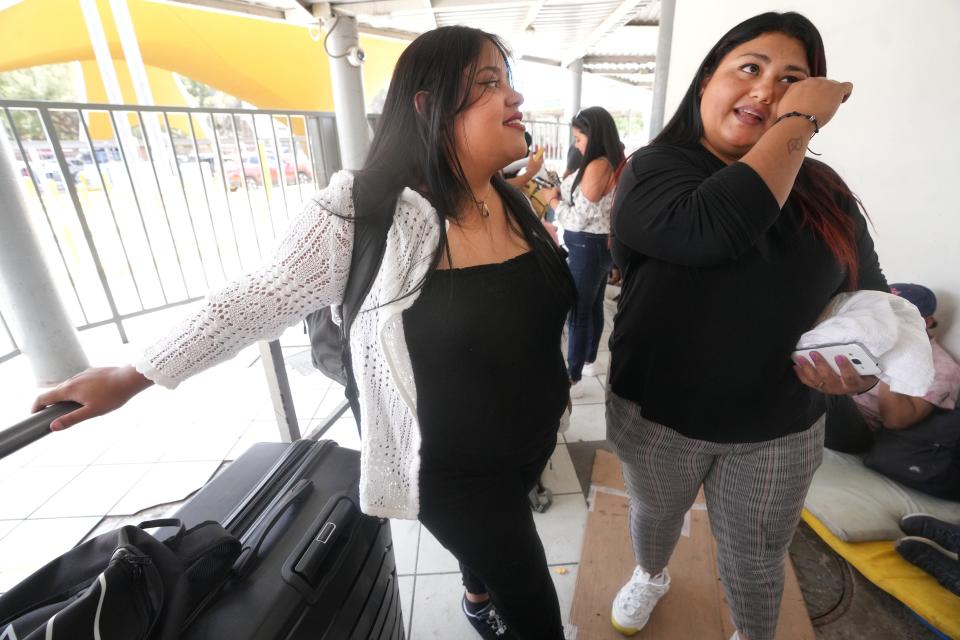
Migrants who don’t use the app and didn’t ask for protection in a country on their way to the U.S. could be denied asylum years down the line under the Biden administration’s asylum rule.
The app favors users with faster internet speeds and up-to-date phones, creating a divide among who gets an appointment, advocates say.
Many migrants cannot endure the monthslong wait and choose to use a different pathway to enter the U.S.
Migrants may cross in between ports of entry and surrender to Border Patrol agents or add their name to a monthslong waitlist at ports of entry to be processed without a CBP One appointment.
The app-related desperation comes as the Border Patrol encountered more migrants traveling as families in August than in any month in history, according to U.S. Customs and Border Protection data.
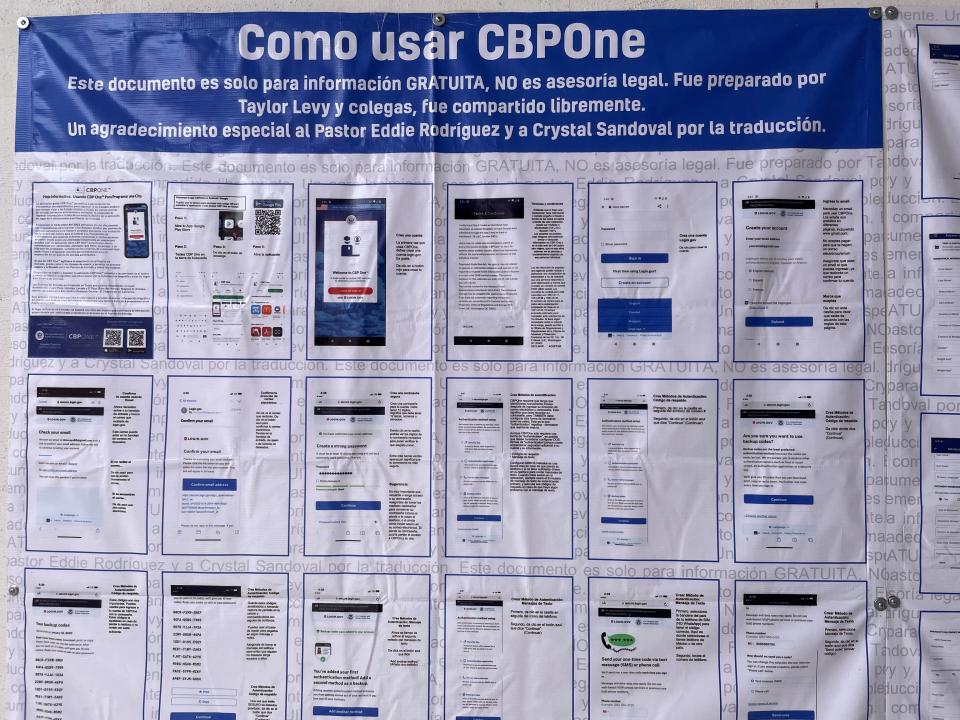
For the second time in U.S. history, annual migrant encounters along the Southwestern border surpassed 2 million, according to unpublished Department of Homeland Security data obtained by CBS News.
People with access to legal pathways may be more willing to wait in Mexico than others without the same opportunities, according to Ariel Ruiz Soto, senior policy analyst at the Migration Policy Institute.
Migrants from Cuba, Haiti, Nicaragua and Venezuela are eligible for humanitarian parole programs that allow up to 30,000 people from the countries to be admitted into the U.S. each month.
What is asylum?: What does it mean to seek asylum in the US? Your questions, answered
Migrants are allowed to stay in the country for up to two years if they pass significant background checks, have a U.S. sponsor and complete the lengthy application process.
“When people don't have equitable access to other pathways, then migrants of other nationalities may be more likely to come between ports of entry,” Ruiz Soto said.
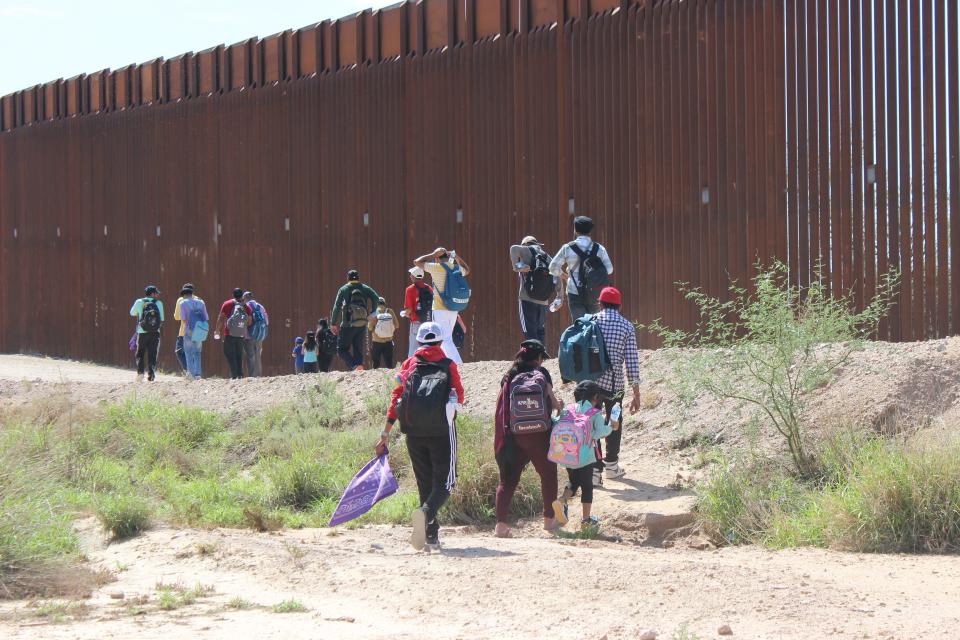
Pressure from U.S. and Mexican immigration enforcement policies may influence people to cross between ports of entry if they cannot wait in Mexico, Ruiz Soto added.
Acting Deputy Secretary of Homeland Security Kristie Canegallo acknowledged that demand often outpaces the CBP One appointment supply during a visit on Friday to U.S. Immigration and Customs Enforcement Air Operations in Mesa where deportation flights are coordinated every week.
“There is the reality that there is a higher demand then we do have the ability to offer on a daily basis so that does mean that individuals are waiting several weeks,” Canegallo said.
Canegallo highlighted the numerous updates that the app has gone through as well as DHS efforts to expedite work authorization for migrants who are paroled through the CBP One app.
“We do think that this tool has been a really important tool for us to be able to help individuals come to ports of entry in an orderly way,” Canegallo added.
A waitlist is maintained for migrants wanting to be processed without a CBP One appointment at the DeConcini port of entry. Migrants wait about two to three months before being called to the port.
In Eagle Pass, Texas, and Ciudad Juárez, Chihuahua, migrants reported being desperate and tired of waiting for an appointment. Some weren’t even aware that the app existed.
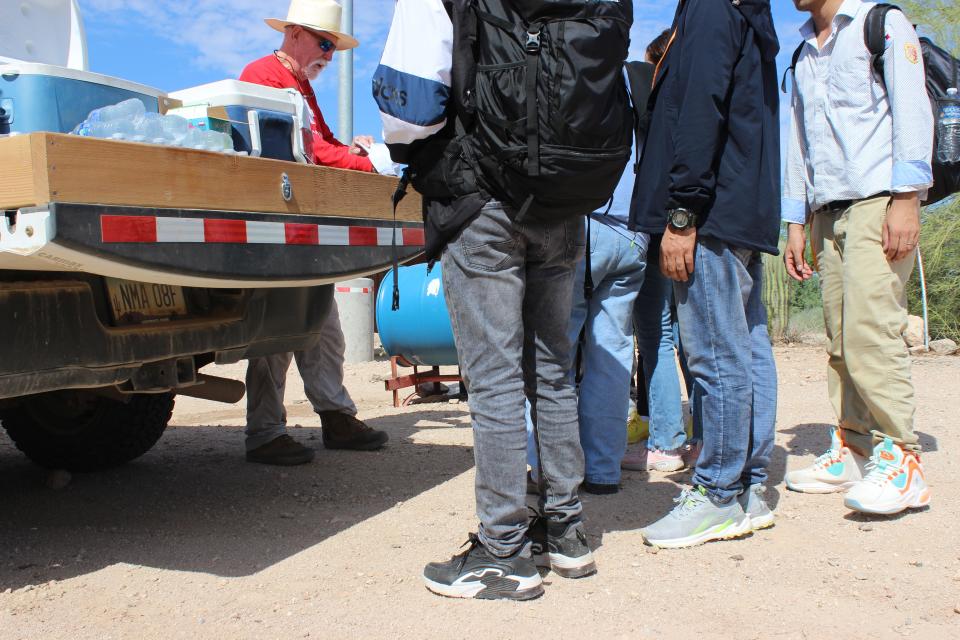
Migrants are oftentimes not told about the app or told they don’t have to wait for an appointment to cross in between ports of entry, according to Adam Isacson, director for defense oversight at the Washington Office on Latin America.
Smugglers or people who’ve made the trip before are relaying the advice to migrants, Isacson said.
AZ border gaps: 2 Arizona border wall gaps closed, 50 remain near Sasabe as construction continues
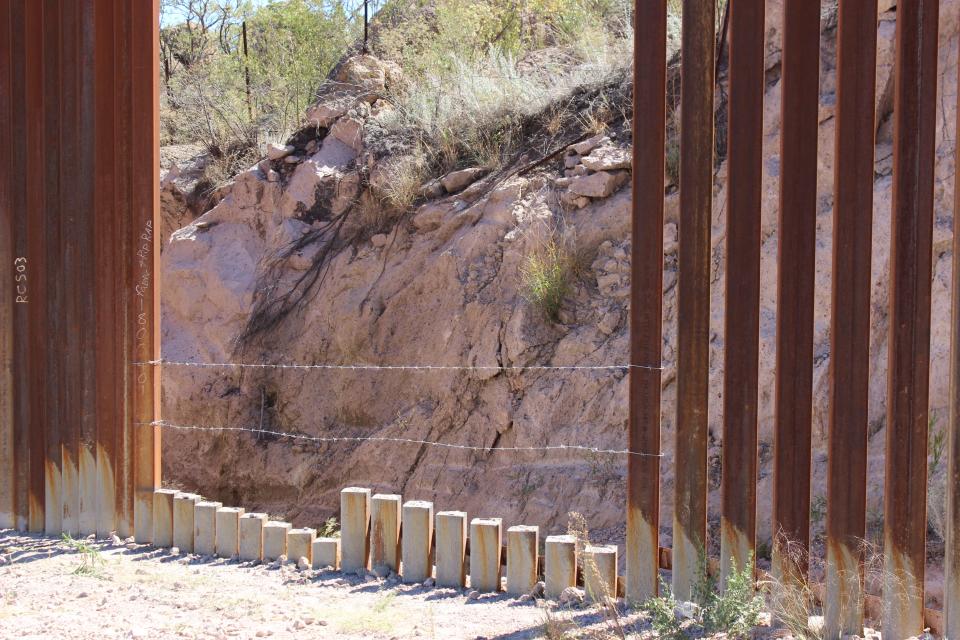
On a recent morning near Sasabe, five migrant families sat against the border wall. The families, totaling 15 people, came from San Luis Potosí, Mexico, and were waiting to surrender to Border Patrol agents.
They had crossed into the U.S. through a nearby gap in the border wall. None of them had heard about the CBP One application.
Julio Cesar Lerma Ceballos from Colombia only learned about the app from Facebook and YouTube.
In early August, migrants in and around Nogales increasingly crossed in between ports of entry, despite scorching temperatures, according to an August report from the Robert Strauss Center for International Security and Law.
There was roughly a 9% drop in the number of migrants who were encountered at ports of entry along the southwest border from June to August, per CBP data.
While the number of people encountered at ports of entry decreased, the percentage of people who had a CBP One appointment increased since June.
Have a news tip or story idea about the border and its communities? Contact the reporter at [email protected] or connect with him on X, formerly known as Twitter, @joseicastaneda.
This article originally appeared on Arizona Republic: CBP One: Migrants seeking asylum in US want alternative to mobile app
